FAQ Page Best Practices (with 10+ Examples to Guide Your Strategy) 


Imagine a page on your website that can effectively convert customers AND improve your rankings in Google’s organic search results.
That’s the power of a good FAQ page.
An effective FAQ page provides customers with crucial information they need to make a purchasing decision. And often, it’s the difference between a successful sale and a lost one.
Here’s why.
Put yourself in your customer’s shoes. You’re browsing through a brand’s website and you’re on the fence about a product. Instead of adding it to your cart, you look for content to help you make up your mind, like the returns policy or shipping times.
In one scenario, you find an FAQ page that assures you that you’ll receive your product quickly and that you can return it within 14 days for a full refund. Satisfied with the answers, you make your purchase.
In another scenario, you scour the website but can’t find the information you’re after. You leave, find a competitor who DOES answer all of your questions, and make your purchase there.
This type of situation happens every single day. Without FAQs, you’ll lose out on countless opportunities to turn visitors into customers — and what’s more, it’ll cost you valuable online visibility in organic search engine results.
So how do you create an SEO-friendly FAQ resource that helps your rankings and revenue? This guide will cover all the essential aspects of an FAQ page, SEO best practices to incorporate into your own page, and examples to inspire you.
First, some basics.
What is an FAQ page?
FAQ stands for ‘Frequently Asked Questions’, which is about as self-explanatory as a marketing term gets.
An FAQ page is a dedicated space on your website where people can find questions and answers in an organised, easy to digest format.
A strong FAQ section is a powerful customer service resource as it allows you to clearly respond to potential customer questions. More importantly, you can reply to these questions without being directly involved in the conversation.
Instead of generating support tickets for customer service inquiries, replying to emails or fielding phone calls about the same topics, your FAQs educate, inform, and guide people towards an end goal.
For example, at Online Marketing Gurus, our FAQ page helps our audience learn more about our company and how digital marketing can benefit their business.
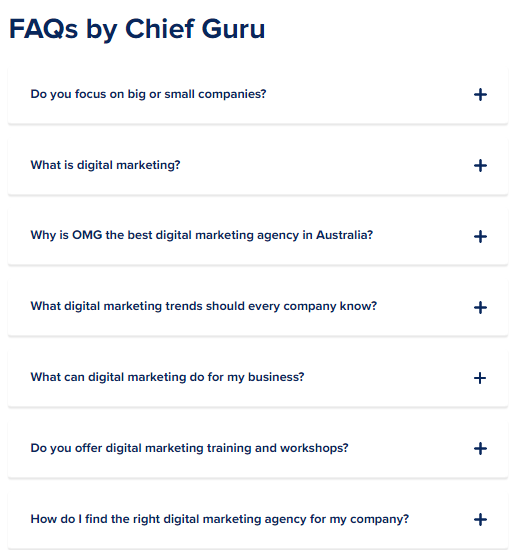
What is the purpose of an FAQ page?
A well-built FAQ page has two purposes.
First, it reduces the need for you or your support team to be fielding the same surface-level questions that aren’t moving the needle on sales.
Website visitors have all kinds of questions — and a good portion of them will ask the same things over and over again. By pre-empting customer queries before they’re asked, an FAQ section saves you (and your customers) the hassle of a phone call or email.
It’s a way of advancing the conversation with a customer without you needing to be there. You save time, your audience saves time, and everybody wins.
Second, a top-notch FAQ page helps improve your SEO through the inclusion of relevant keywords that improve your SEO rankings and organic traffic.
Set up correctly, FAQ pages can drive highly targeted traffic to your website from search engine users asking broad questions about your industry and business — even when they’ve never heard of you.
They also give you a chance to appear in Google’s “People also ask” section:
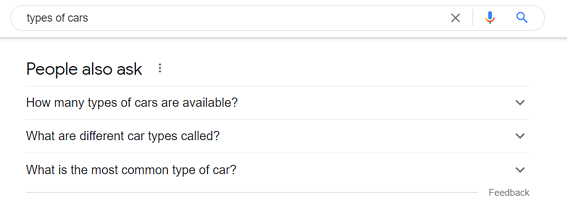
A word of caution: don’t get bogged down trying to “optimise” the life out of your FAQ page. SEO benefits are secondary to user experience. Google values websites that help give people the information they need, so when you focus on helping customers, the SEO results will follow.
With that being said, there are a few things you can do to ensure your FAQ page is loved by users AND Google.
6 ways to create an SEO-friendly FAQ page
1. Gather relevant FAQs
Frequently asked questions are just that — frequently asked. Before you start putting together your FAQ pages, you need to dive in and do research to find out which questions your users are asking on a regular basis.
Start by using a keyword research tool like SEMrush to find long-tail keywords that searchers commonly ask. Simply pop in your seed keyword, such as “currency exchange”, and select ‘Questions’ to see the most common search queries:
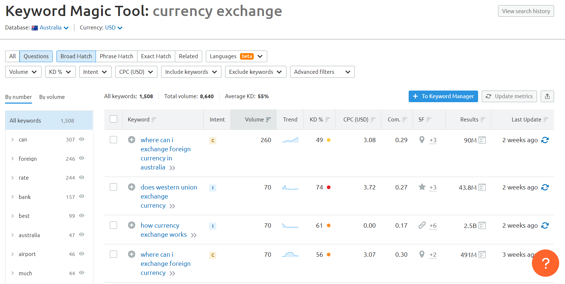
Forums like Quora and Reddit are two more great sources for FAQs related to your industry and products or services.
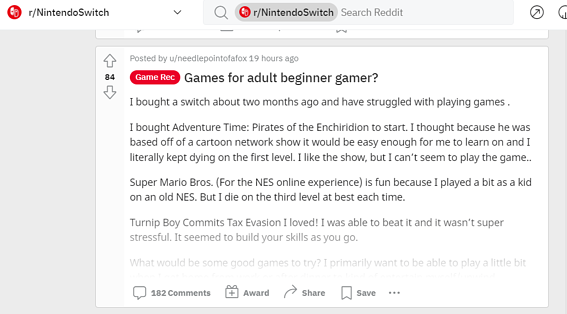
2. Implement structured data in your FAQs
Structured data tells Google what type of content you’re including on your website, and gives your page a higher chance of ranking in rich snippets (a.k.a. position ‘0’) in search.
Here’s what it looks like in action:
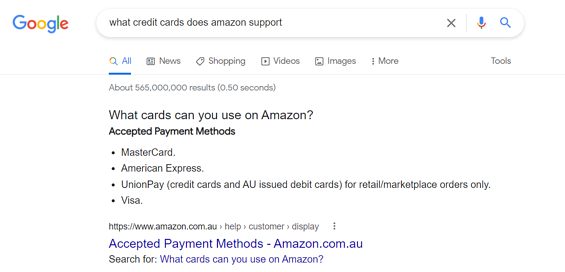
Rich snippets (also known as featured snippets) are generated from structured data, a specialised markup you can add to your FAQ page’s code that contains a list of questions and answers.
There are multiple benefits to using structured data on your FAQ page.
When you use structured data, your website will occupy more real estate on the SERPs. Given that a third of all clicks go to the first result in Google search, this is absolutely a position you want to be in.
Offering more answers also increases the likelihood of getting a click because your rich snippet provides your target audience with helpful content. Your potential customers can see that you cover a range of questions they’re thinking about asking, giving them an incentive to click on your website over your competitors.
Not convinced? One case study showed a 50% increase in click-through rate after implementing FAQ schema.
Google has detailed instructions on how to implement structured data on your FAQs on Google Search Central. Your answer will also be eligible for voice search results using Google Assistant.
3. Format your FAQ page for user experience (UX)
You know that saying “a picture is worth a thousand words”?
This is particularly true when it comes to FAQ pages.
While you may want to load your FAQs with lengthy and informative answers, sometimes a picture is far more effective at explaining your concepts in a clear and concise manner.
Airtable does this brilliantly on their website by embedding a how-to video for establishing workflows directly into the FAQ:
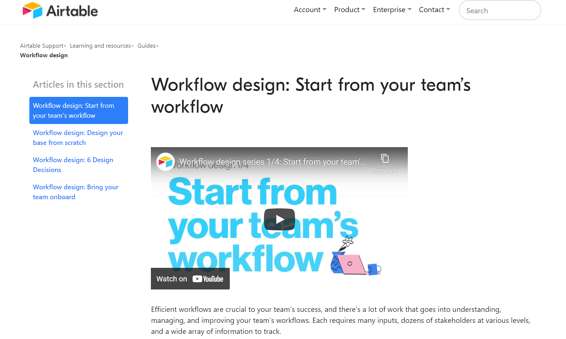
Kathmandu, on the other hand, incorporates screenshots in their FAQ pages, such as this one showing customers exactly how to use their Click & Collect feature:
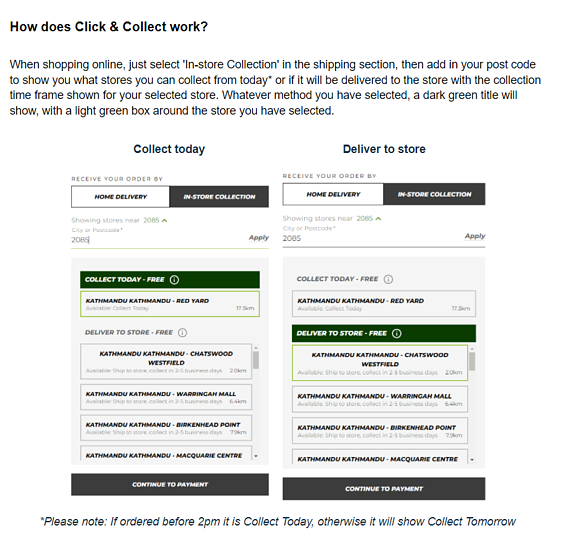
4. Build a solid navigation structure
The key to any SEO-friendly FAQ page is to make it easy for customers to navigate through and find the answers they’re looking for.
According to Toptal, 88% of users are less likely to return to a website after a bad user experience. What’s more, engagement metrics such as dwell time and bounce rate are some of the main ways that Google determines whether a website is useful to its audience.
Make it easy for customers to navigate through your FAQ with a clear, well-structured Help Centre. Monday.com does an excellent job with this by clustering questions into 8 main categories based on what the user is looking for:
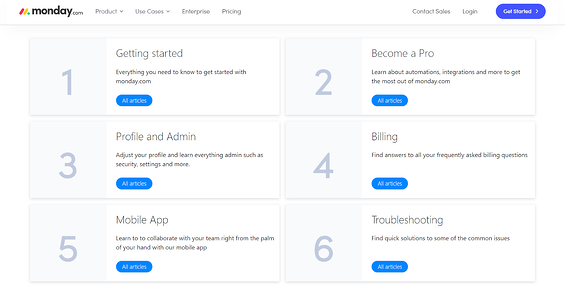
Got a lengthy FAQ page with multiple categories and subcategories? Add in search functionality, so customers can find exactly what they’re looking for in an instant.
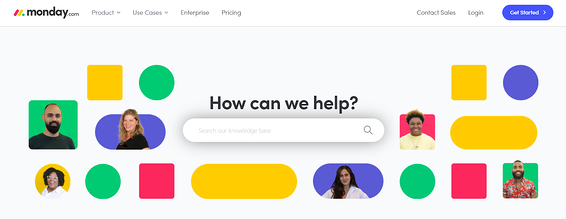
5. Use data to improve your pages
Once you do have your page up and running, keep an eye on your analytics platform to see how your FAQs stack up in terms of user experience and search.
Look at metrics such as:
- Page visitors and unique visitors
- Dwell time
- Bounce rate
- Navigation pages before and after the page
- Organic rankings for target keywords
Use these insights to finetune your FAQ page. For example, if you find that visitors are coming on to your FAQ page and leaving within a few minutes, you may need to review your questions to ensure they’re actually providing the answers that users are looking for.
6. Optimise the title tag and meta descriptions
Don’t forget about your metadata when you’re crafting your FAQ page. Every solid FAQ page should feature a helpful title tag and meta description that searchers see if they look up your page in Google Search:
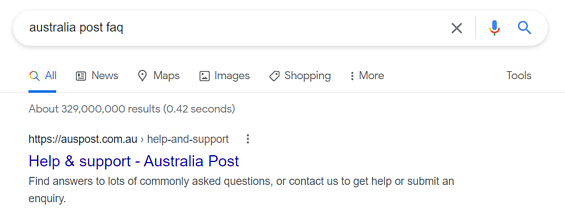
If you have separate FAQ pages for different categories or questions, make sure to optimise your title tag and meta descriptions on these too, like Gymshark:
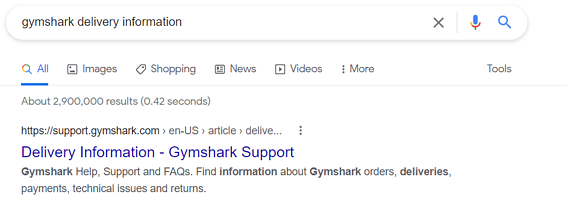
7. Include non-branded keywords
The goal of your FAQ page is synonymous with SEO – to provide the best answers to the questions asked online.
That’s why search engines love FAQ pages because they provide clear, concise, and relevant content that helps them understand your business. And since Google’s goal is to deliver answers to a user’s questions, adding Q&A sections on your website is doing half the work for them.
Using non-branded keywords is key to this process.
For example, if you sell t-shirts online, you’ll probably want to include answers relating to the materials you use, any commitment to sustainability, or your distribution network – i.e. branded questions.
But you can also boost your chances of ranking on Google for non-branded keywords, like how to measure t-shirt size, how to care for a new shirt or washing tips for cotton shirts.
FAQ page best practices
Find & answer real questions
Speak to your customer care team or sales reps to see which questions they get asked in their daily job. This is a valuable source of first-hand information on what customers want to know during and after their path to purchase. You can also work with these teams to put together answers for your FAQs, as many support functions have a list of commonly asked questions and recommended responses.
Need to add even more content to your FAQ pages? Send out a survey to your existing customers and prospects to see if they have any pain points that you can address while building your page. Alternatively, analyse your customer reviews to see if there are any insights you can use as part of your FAQ. You may see comments like “I wish I knew this” or “If only they had mentioned this”. Add these in to your FAQ page to improve the shopping experience for future customers.
Make questions relevant and timely
Customers shouldn’t be asking the same questions over and over again. If they do, your FAQ page is falling short of its main job — to answer the questions that pop up time and time again.
Make sure to include questions that your customers ACTUALLY ask on your page, not just long-tail keywords you want to rank for in Google search. Try to incorporate questions that accompany buyers before, during and after they make a purchase.
The Iconic does a great job of this by sorting their questions into specific categories based on the customer journey, such as pre-purchase, orders and payment, shipping and delivery, and returns and refunds:
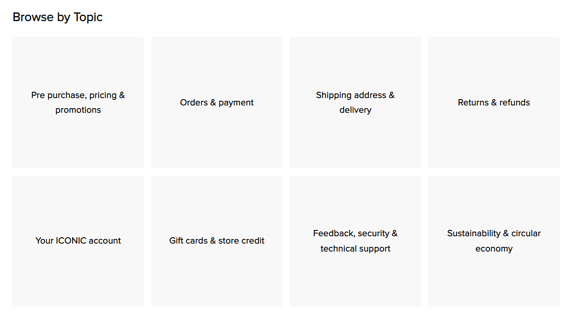
Focus on helping customers first and they’ll be more likely to spend time on your website and convert. And a high-converting website = a high ranking website.
Be clear and concise
Your site visitors don’t have all day.
They want to receive relevant information without extra filler. Studies show the average time a user spends on your site can be as fleeting as 15 seconds, so the quicker you can satisfy a query, the better your user experience.
Skincare brand The Ordinary is a perfect example of short, concise FAQs that address common queries a customer might have. If the question requires a lengthier answer, the brand directs customers to a separate webpage using internal links:
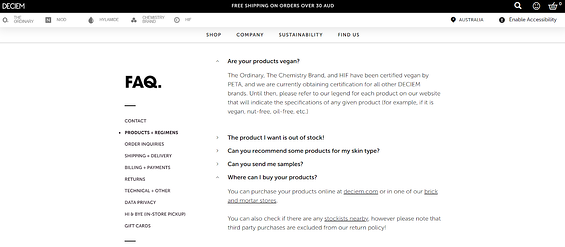
Another plus to keeping your answers short and sweet? Ranking in voice search. Googe prefers short answers, with the average voice result containing just 29 words.
Batch questions together
For a better FAQ page experience, organise your questions by category with noticeable headlines.
Emma does a great job of this on their FAQ page by clustering questions together based on the product type, purchase, trial and warranty, and top questions:
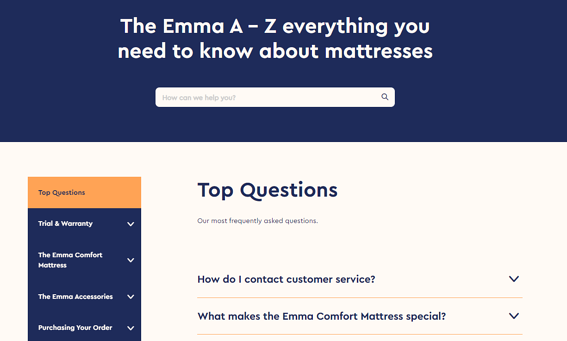
Prefer visual web pages? Add in icons for a user-friendly experience, like Dollar Shave Club did with their Help Centre:
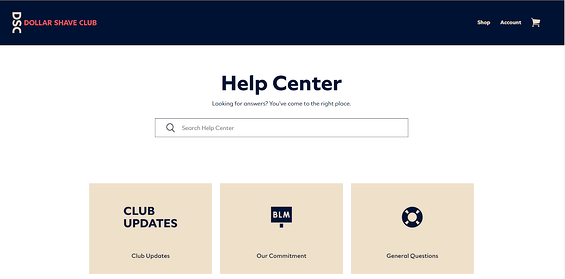
Link out to external sources
While you do want to try and keep site visitors on your page as much as possible, you can actually build up your brand credibility by linking out to external sources where appropriate. For example, you might link out to external sources when you’re referencing awards that your company has won, or linking to statistics or resources to strengthen your brand’s reputation.
Outland Denim does this particularly well in their well-optimised FAQ page. For the question “What should I look for when shopping sustainably?”, the brand links to a number of third-party sources that customers can use to check whether products are sustainable:

Best FAQ page examples
We’ve rounded up a selection of FAQ page examples with stand-out characteristics across user experience and customer personalisation.
Take inspiration and tips from these brands that have created strong, people-first, and SEO-friendly FAQ pages.
Kleenex
Kleenex’s FAQ page is on-brand, thanks to its subtle use of the iconic Kleenex blue and the unique font at the top of the page.
The kicker?
This page is also incredibly clear and easy to navigate.
The FAQs are separated into helpful categories, including product information, where to purchase Kleenex products, manufacturing, history, and environmental impact.
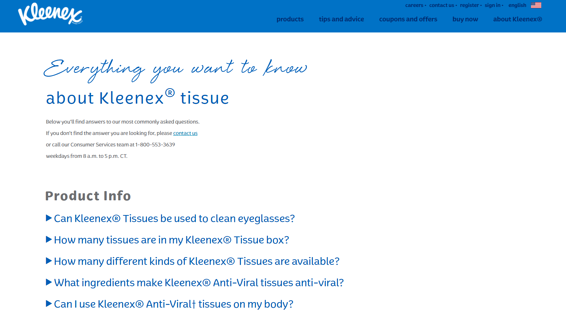
Once a customer clicks on a question, a short, concise answer appears as a dropdown — making it easy to get multiple answers without ever needing to leave the page.

Instagram’s Help Centre is simple and straightforward — and that’s exactly what makes this an effective FAQ page. From the moment a user lands on the page, they’re presented with common help categories, as well as a search bar to quickly navigate to their query:
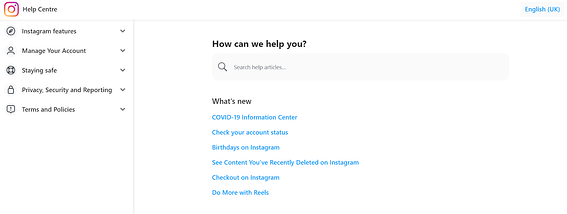
For each question, Instagram also incorporates icons and visuals to make the answer more engaging, and a user feedback section where people can provide feedback on whether the content was useful. The result is a slick FAQ that truly is best in class:
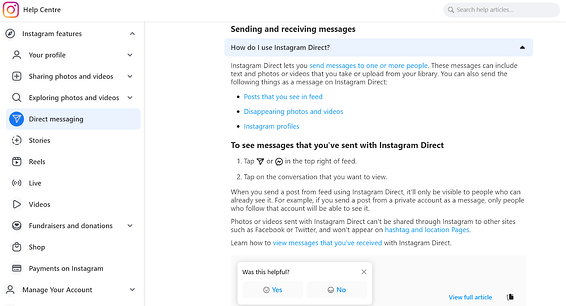
Spotify
Spotify’s support section is everything that good FAQ pages should be: clear, helpful and on-brand. The prominent search bar prompts users to type in their query, while the pinned FAQ questions at the top provide easy access to some of the most common issues that users might encounter.
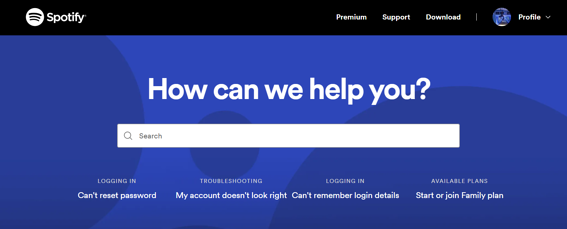
Click on a question, and you’ll be presented with a well laid out answer, along with more dropdown boxes to guide you to solve your problem:
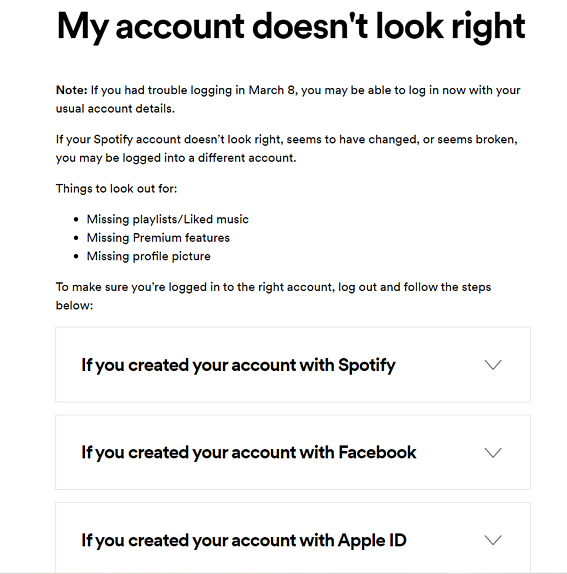
Headspace
Headspace doesn’t just relieve stress with its meditation app. Their FAQ page also takes all the stress off troubleshooting problems for its users with clearly laid out categories and screenshots showing how to navigate the platform.
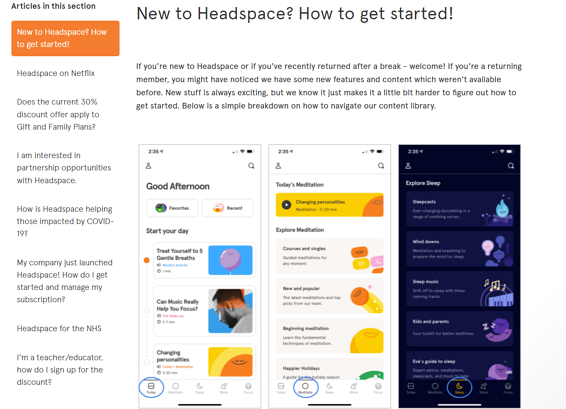
Even the design of the FAQ pages is zen:
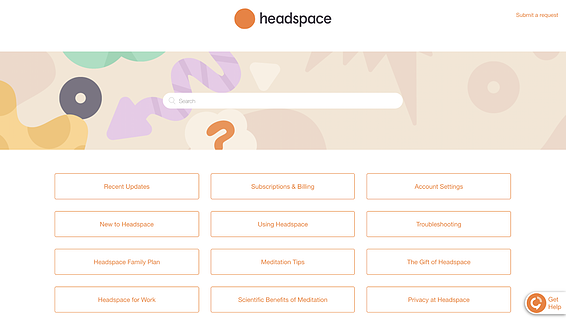
Pinterest’s FAQ hub is made to solve problems for both general users and business users. As soon as users land on the page, they can click on either “General” or “Business” to find answers to queries that are specific to how they use the platform:
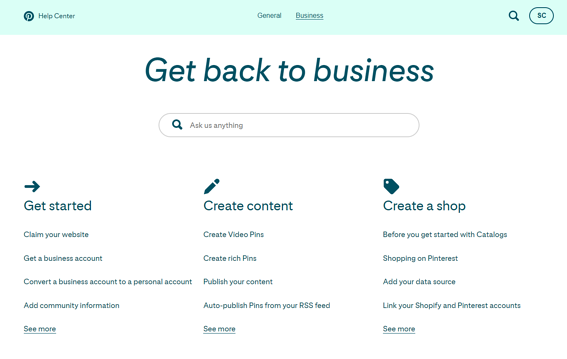
Each category is clearly listed out, along with the top four most common queries and internal linking to browse the entire category. On top of that, every question has a well-presented answer, complete with step-by-step instructions if needed:
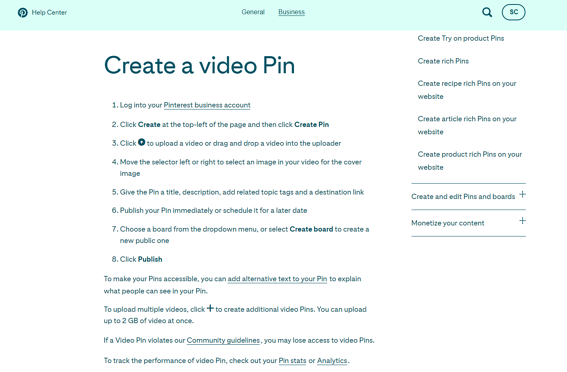
Bank of America
Banks receive countless queries from their customers, so it’s no surprise that Bank of America has gone to great lengths to make its FAQ pages as informative and comprehensive as possible.
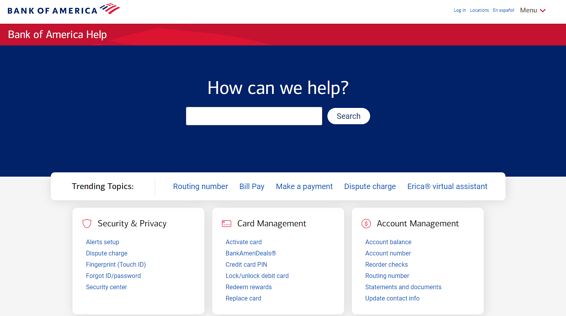
By covering off a myriad of topics in their FAQs, Bank of America is helping its support team save time and directing customers to the most appropriate avenue for their query. The Help Centre is even available in Spanish to address the US’ significant Hispanic and Latino population.
YouTube
Like Instagram and Pinterest, YouTube’s FAQ pages cover off a range of topics starting from watching videos to signing up for YouTube Premium, becoming a content creator, and monetising content through the YouTube Partner Program.
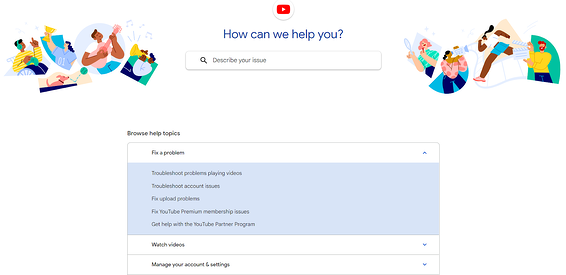
The beauty of YouTube’s Help Centre is that they also have a Creator Tips section and a YouTube Help Community, where users can post issues and get responses from other creators.
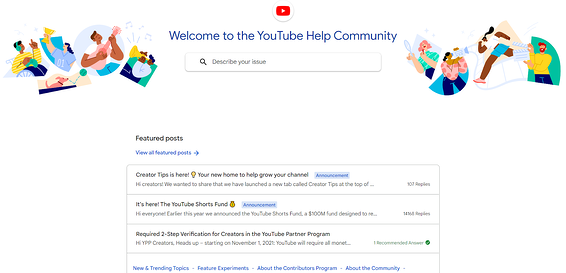
Microsoft
Microsoft has a ton of products in its portfolio. Recognising that users might come to its website for everything from Office 365 to Surface devices, Microsoft Support has categorised its FAQs into products to make it as easy as possible to navigate:
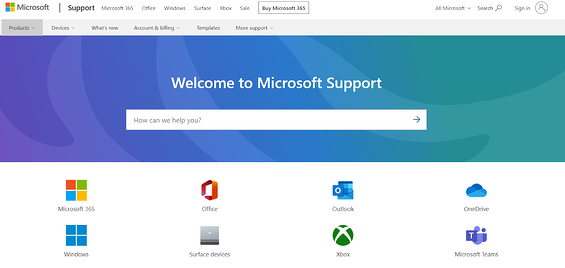
These categories then expand out into subcategories, based on the product or service that customers are using:
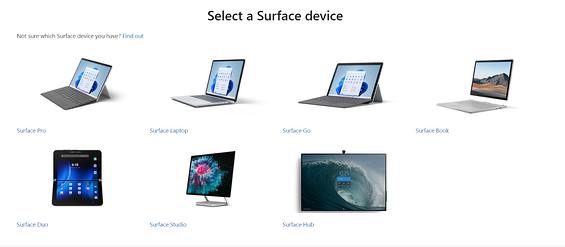
All up, this is one of the best examples of successful FAQ pages for a complex enterprise-level website.
Soundcloud
Whether you’re signing up to Soundcloud or looking to monetise your account, it’s easy to find what you’re looking for in Soundcloud’s Help Centre. All the categories are clearly laid out on the help centre homepage, along with a search bar for users to type in their query:
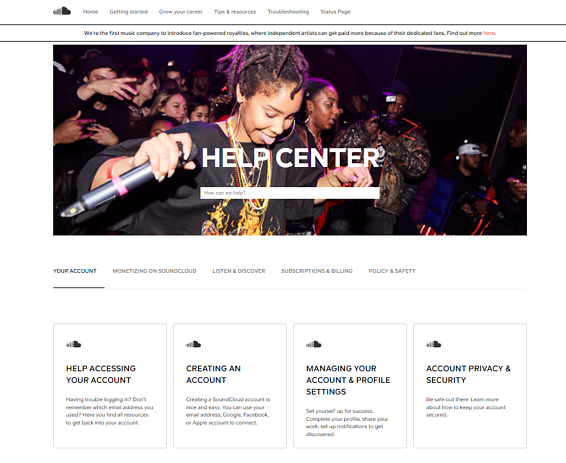
Each FAQ also makes use of white space and graphics to ensure users can follow along with ease:
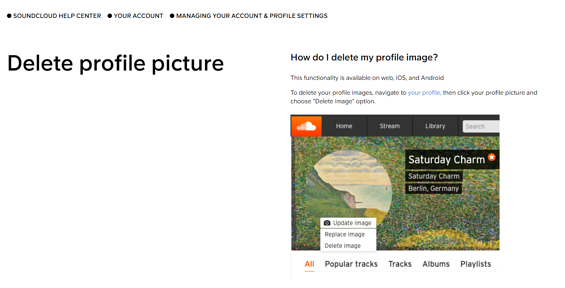
Whatsapp’s solid FAQ page helps website visitors narrow their search within seconds.
Got an iPhone? There’s an FAQ section for you. Rocking an Android? There’s a section for you too.
This FAQ page is also an example of using your branding to create consistency, with the soothing green of Whatsapp’s FAQ page complementing the more vibrant green that all Whatsapp users associate with the app.
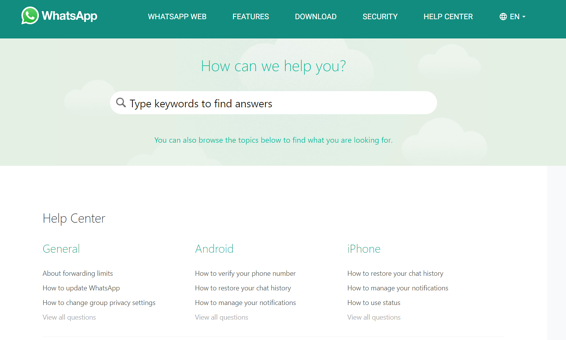
Over to you
If you care about improving your user experience, increasing browsing times, and spiking conversion rates through high-quality content, you need to create an effective FAQ page.
At the same time, an FAQ page helps increase high-quality and relevant traffic by giving people – and Google – what they want.
When SEO and user experience are your goals, you can’t put off building an FAQ page anymore.
We’ve barely scratched the surface of an FAQ page so far because great UX and SEO are complex topics that fill entire guides. Instead, we’ve covered the essentials to help you source the right questions, build an FAQ page that answers your customer’s questions, and streamline your customer service process, with an added SEO boost to boot.
If the research and creation of an FAQ page feel overwhelming, we get it.
Click below to find out more.
❝ That’s why we’re offering a FREE Digital Audit + Strategy Session (valued at $2,000) to get you started. This offer includes a 30-minute call with a Growth Guru, a 6-month multi-channel game plan, and all the support you need to create an FAQ page that starts driving traffic, leads, and sales.









